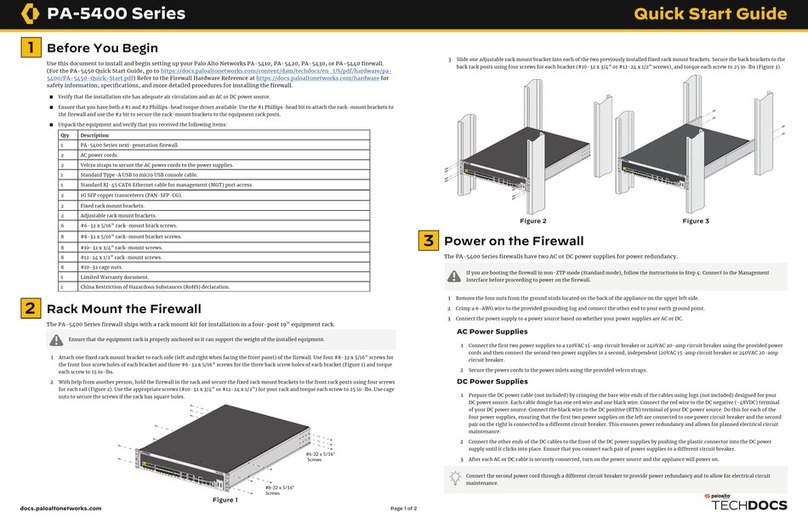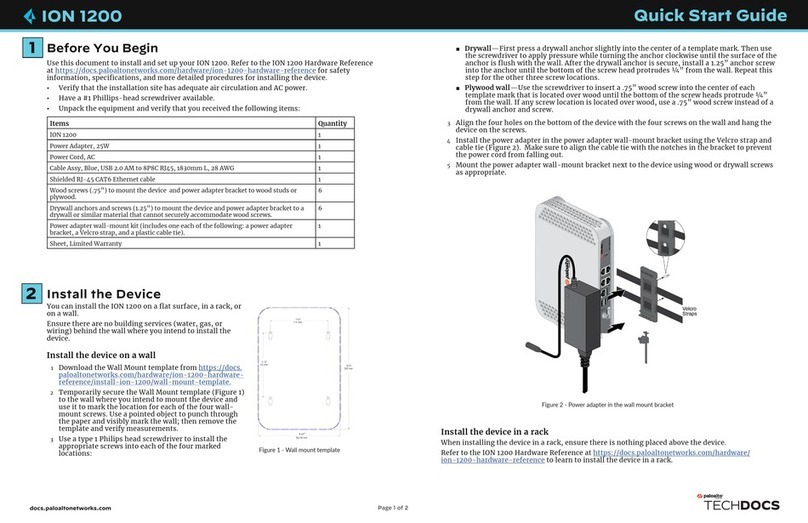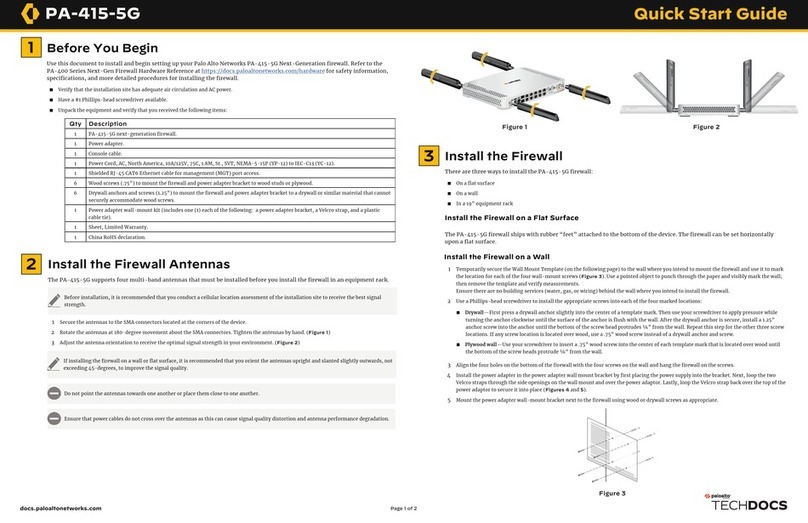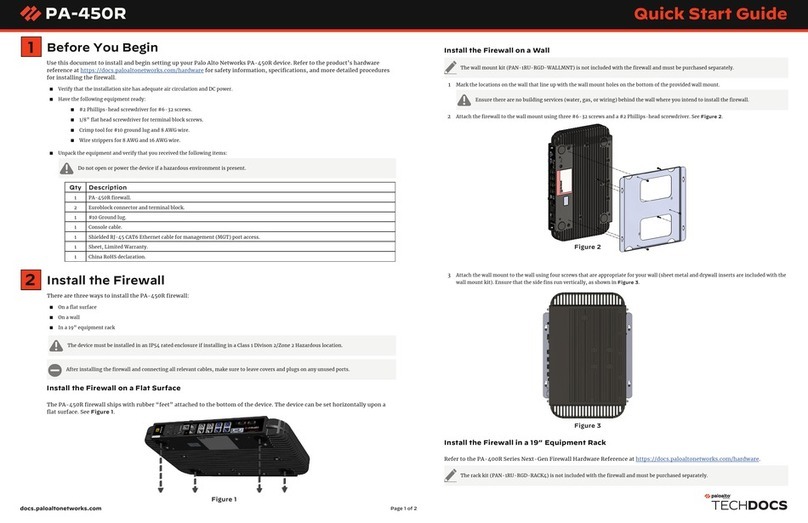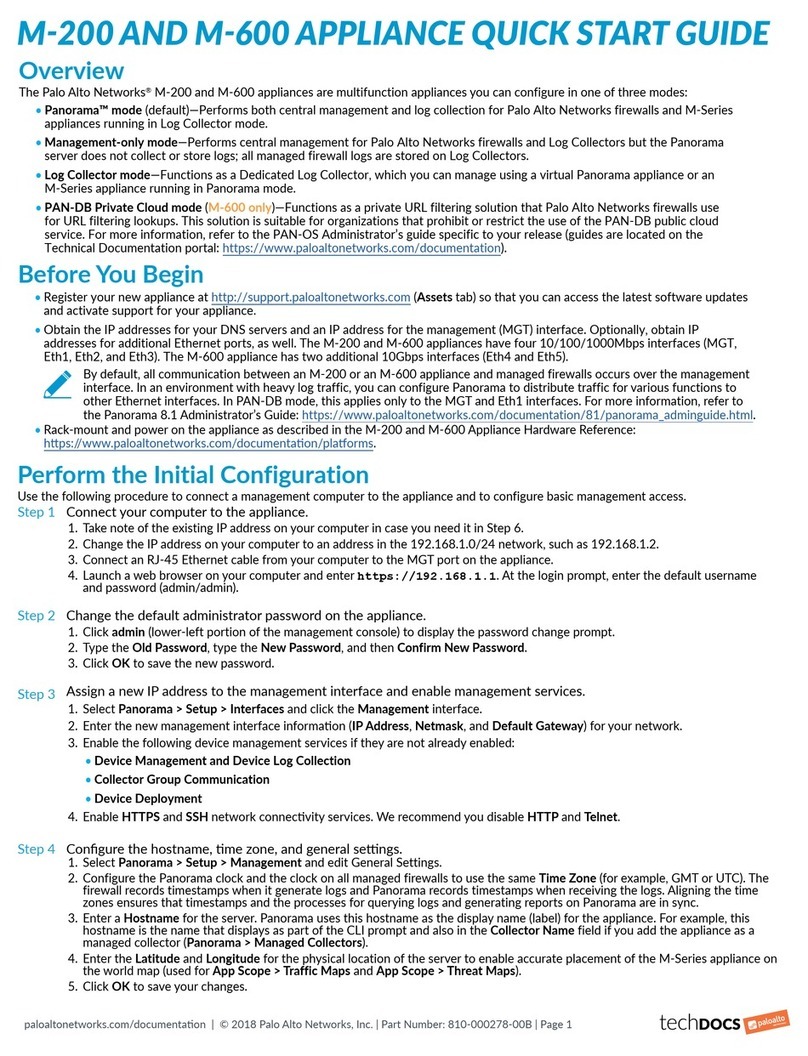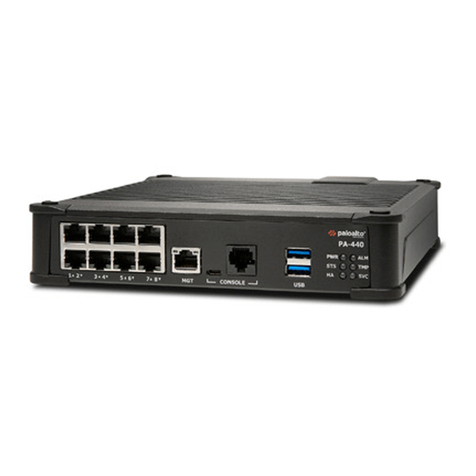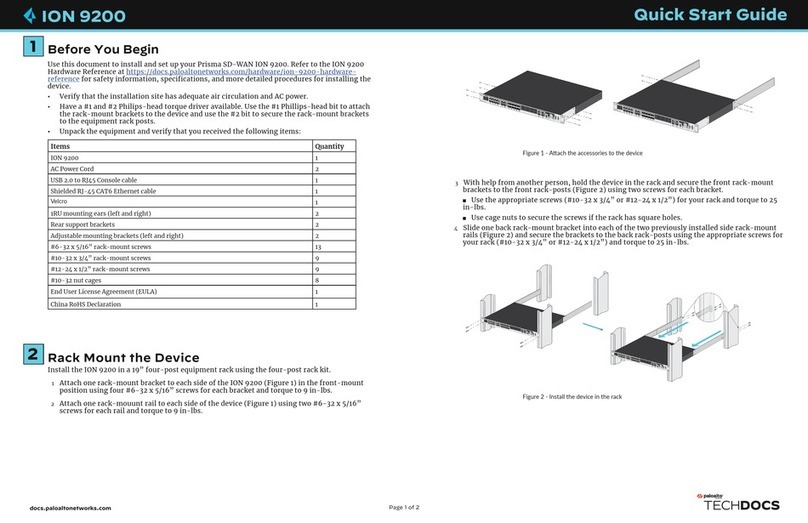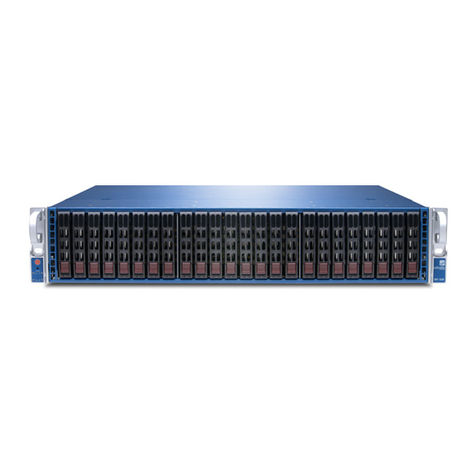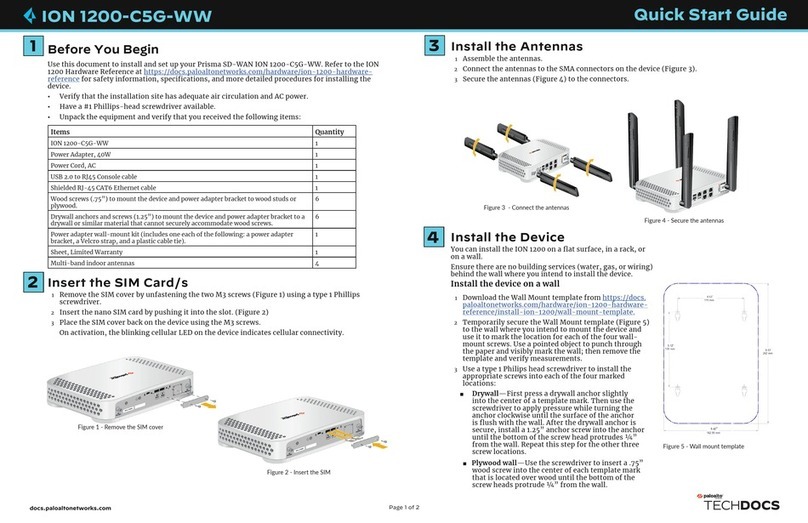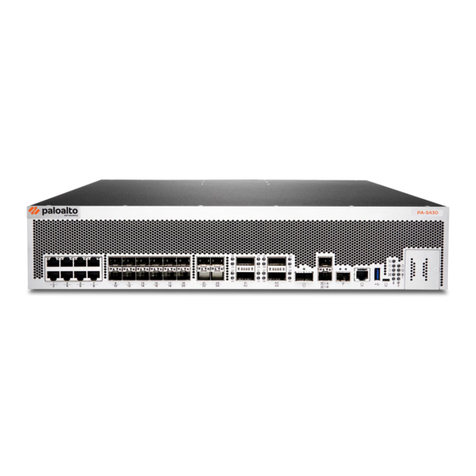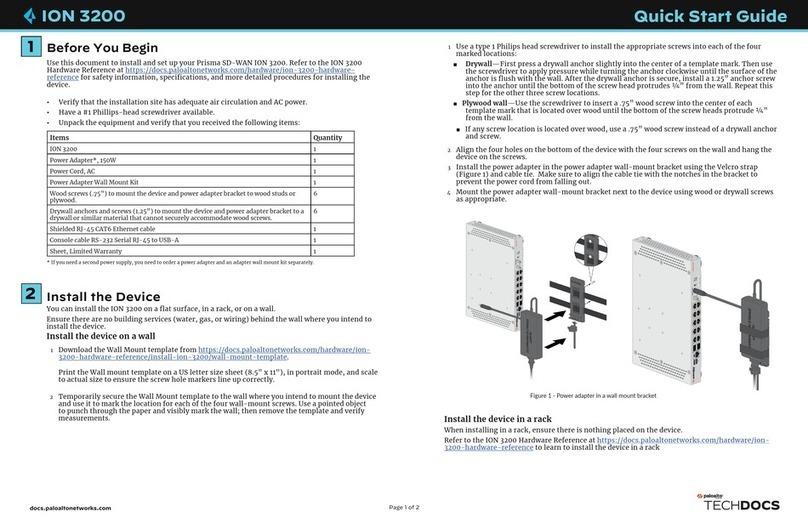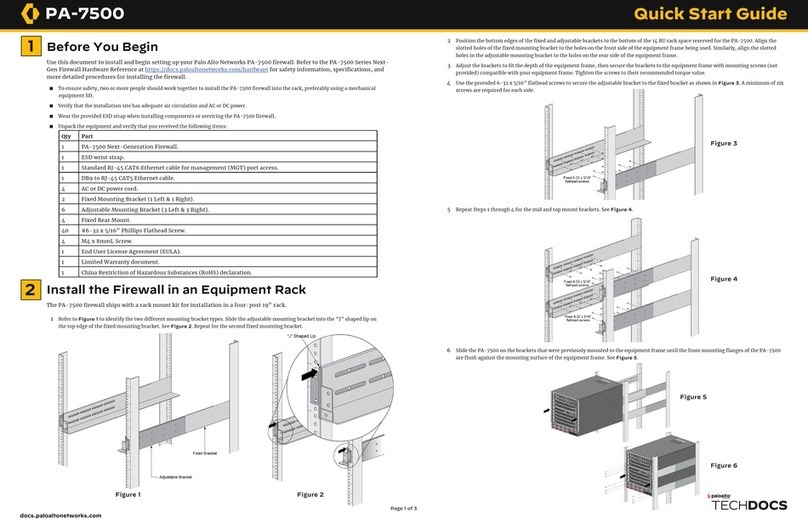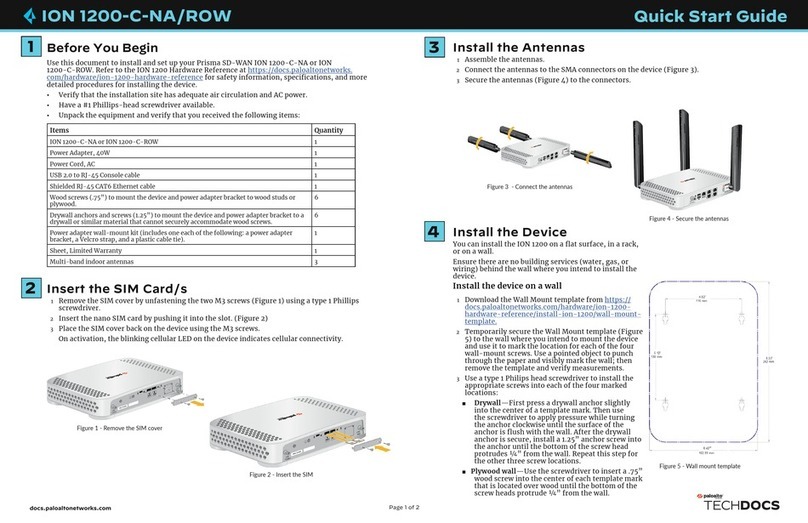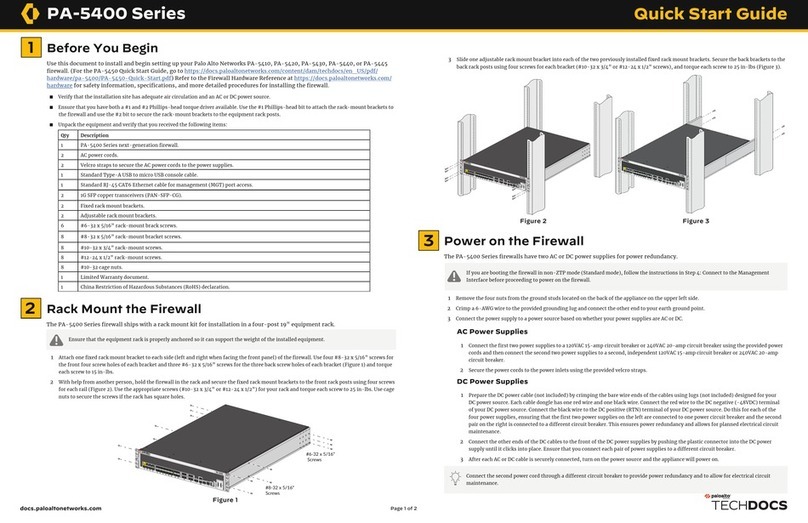
PA-400 SERIES QUICK START GUIDE (CONTINUED)
docs.paloaltonetworks.com | © 2023 | Palo Alto Networks, Inc.
3
(Optional) If you are not able to connect to the management web interface, you can check the status of the firewall by
connecting to the console port using the DB-9 to RJ-45 serial cable (provided) and terminal emulation software, or by using
the micro USB port if you have PA-7050-SMC-B (refer to https://docs.paloaltonetworks.com/resources/micro-usb-console-
port). The console connection provides access to firewall boot messages, maintenance mode, and the command line interface
(CLI).
Page 2 of 2
Where To Go Next
To learn more about the firewall, refer to the PA-400 Series Next-Gen Firewall Hardware Reference Guide:
https://docs.paloaltonetworks.com/hardware.
To learn how to configure Palo Alto Networks firewalls, go to the Technical Documentation portal:
https://docs.paloaltonetworks.com.
(Use the Getting Started information in the PAN-OS Administrator’s Guide for initial configuration tasks.)
Start here to Register and Set Up your firewall and access all resources and support tools:
https://go.paloaltonetworks.com/CustomerLaunchPad
Install the Firewall in a 19” Equipment Rack
Refer to the PA-400 Series Next-Gen Firewall Hardware Reference at https://docs.paloaltonetworks.com/hardware.
Power On the Firewall
1 Connect the DC connector from the power adapter into the PWR 1 port on the firewall and tighten the thumb screw to secure the cable to the
firewall (Figure 6).
2 Plug the AC connector from the power adapter into your AC power source. After power is connected, the firewall powers on as indicated by the
green power LED next to the PWR 1 port. The front PWR LED shows green when a functioning power adapter is connected.
3 (Optional) Connect the DC connector from a second power adapter (purchased separately) into the PWR 2 port and plug the AC connector into
a second AC power source.
Figure 6
Connect the second PA-400 power adapter through a different circuit breaker to provide power redundancy and allow for electrical circuit
maintenance.
Connect to the Management Interface
Connect in ZTP Mode
1 Unbox the firewall.
2 Connect the ZTP port (Ethernet port 1) on the firewall to an active network switch.
3 Power on the firewall.
4 Follow the instructions provided by your Panorama administrator to register your ZTP firewall. You will have to enter the serial number
(12-digit number identified as S/N) and claim key (8-digit number). These numbers are on stickers attached to the back of the device.
5 Contact your Panorama administrator if you require further assistance.
Connect in Standard Mode
1 Connect the standard RJ-45 Ethernet cable from the RJ-45 port on your computer to the
MGT port on the firewall.
2 Ensure that you have access to a terminal emulator such as PuTTY.
3 Power on the firewall.
4 Access the firewall CLI using your terminal emulator. Watch for the following prompt:
Do you want to exit ZTP mode and configure your firewall in standard mode (yes/no)[no]?
Enter “yes.” The system will then ask you to confirm. Enter “yes” again to boot the firewall in standard mode
5 Stand by as the firewall boots up.
6 Change the IP address on your computer to an address in the 192.168.1.0/24 network, such as 192.168.1.2.
7 From a web browser, go to https://192.168.1.1.
8 When prompted, log in to the web interface using the default username and password (admin/admin).
If you miss the above CLI prompt, you can also change your boot mode using the web interface. Go to the firewall login screen
at any point before or during the startup process. A prompt will ask if you wish to continue booting in ZTP mode or if you
would like to switch to standard mode. Select Standard Mode and the firewall will begin rebooting in standard mode.
4

